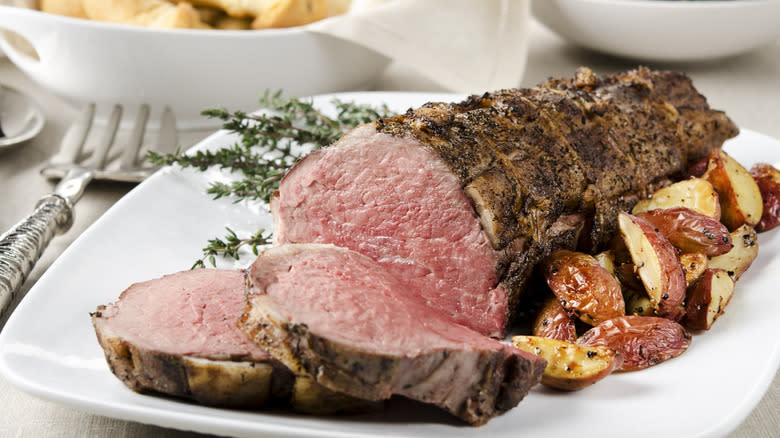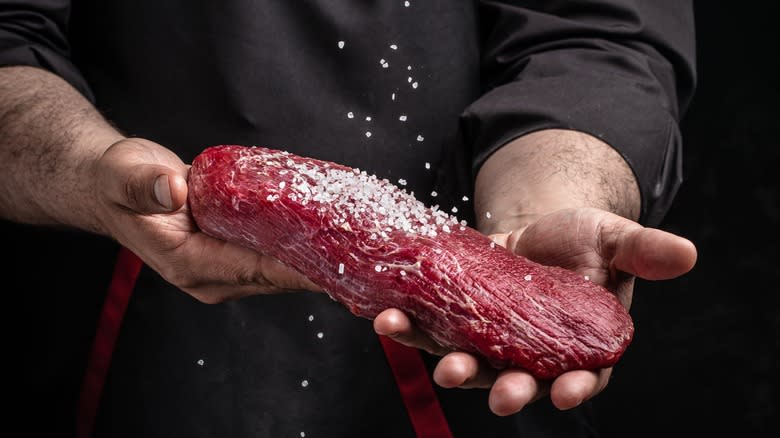The Salt Technique You Need For Flavorful Beef Tenderloin

Tenderloin is one of the most sought-after cuts of beef, but if you want to see its full potential, you need to trust in the power of salt. Coming from the top of the cow's back, the tenderloin's appeal is right there in the name. As a muscle that doesn't get much work, the tenderloin is the most supple and tender cut of beef there is. Broken down, it gets turned into some of the most desirable and expensive steaks you can buy, like porterhouse and filet mignon. So, why is using salt right so essential for such a high-quality cut? It comes down to two other characteristics of tenderloin: It's an extremely lean piece of beef with little fat. This means it dries out easily, and since fat is flavor, it has a pretty mild taste. Salt can help with both, and the technique you need to be using is dry brining.
Dry brining is simple but will have a huge impact on your tenderloin. The night before you are going to cook your beef, season the entire outside of the roast with plenty of salt. Then, let it rest, uncovered, in the refrigerator overnight. It should sit for a minimum of 12 hours but can rest for 24 or more. Even if you change nothing else about your recipe, and no matter how you plan to cook it, this one step will ensure your tenderloin stays juicy and as flavorful as it can be.
Read more: The Most Popular Cuts Of Steak Ranked Worst To Best
An Overnight Rest With Salt Improves The Flavor And Texture Of Beef Tenderloin

We all know salt amps up the flavor of anything, but the secret to dry brining (as opposed to wet brining) lies in other aspects of salt's chemical makeup. When you sprinkle salt on meat, it seasons the outside, but if you let it sit for hours, the salt will break down and start to be absorbed into the cut. Gradually, through the process of osmosis, the salt will travel through the water in your meat all the way to the center. This ensures every bite is well-seasoned and flavorful, not just the outside.
That's just the beginning. Salt is one of the best ways to tenderize steak because it breaks down muscle proteins. Meat expels moisture as it cooks because the heat causes those muscle proteins to contract and squeeze out water. If the proteins start to dissolve because of extended exposure to salt, they won't contract as much when they cook, and your beef will stay more moist. For any lean cut of beef, like tenderloin, this is very important, as you need it to retain as much water as possible to stay buttery and soft. And like with seasoning, an overnight rest ensures that the whole cut of tenderloin will benefit, even the center. So no matter what you plan to do with your beef tenderloin, make time to salt it and rest it overnight, and everything else you do will just be gravy.
Read the original article on Tasting Table

 Yahoo Lifestyle
Yahoo Lifestyle 
